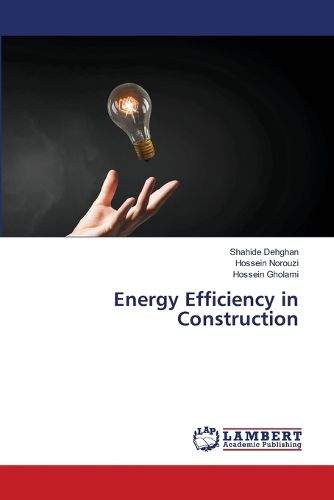Readings Newsletter
Become a Readings Member to make your shopping experience even easier.
Sign in or sign up for free!
You’re not far away from qualifying for FREE standard shipping within Australia
You’ve qualified for FREE standard shipping within Australia
The cart is loading…






This title is printed to order. This book may have been self-published. If so, we cannot guarantee the quality of the content. In the main most books will have gone through the editing process however some may not. We therefore suggest that you be aware of this before ordering this book. If in doubt check either the author or publisher’s details as we are unable to accept any returns unless they are faulty. Please contact us if you have any questions.
Facilities in buildings, as systems related to the transmission, supply, and distribution of energy and services inside the building, play a very important role in the quality of life of the residents and the efficiency of the building. With the advancement of technology, the methods and equipment used in the implementation of facilities have been improved and optimized, so that they not only help to reduce energy consumption and related costs, but also help to preserve the environment and increase the sustainability of buildings. In this article, we will examine the various methods of implementing facilities in buildings, focusing on traditional methods and new technologies. Also, we will examine the advantages and disadvantages of each of these methods to determine the best options for implementing facilities in buildings. Installations in buildings include various types of technical systems that have evolved from the beginning of architecture to today. These systems include electricity, heat, cold, air conditioning, and water and wastewater management. Smart systems include the use of sensors, wireless networks, and advanced software for intelligent monitoring.
$9.00 standard shipping within Australia
FREE standard shipping within Australia for orders over $100.00
Express & International shipping calculated at checkout
This title is printed to order. This book may have been self-published. If so, we cannot guarantee the quality of the content. In the main most books will have gone through the editing process however some may not. We therefore suggest that you be aware of this before ordering this book. If in doubt check either the author or publisher’s details as we are unable to accept any returns unless they are faulty. Please contact us if you have any questions.
Facilities in buildings, as systems related to the transmission, supply, and distribution of energy and services inside the building, play a very important role in the quality of life of the residents and the efficiency of the building. With the advancement of technology, the methods and equipment used in the implementation of facilities have been improved and optimized, so that they not only help to reduce energy consumption and related costs, but also help to preserve the environment and increase the sustainability of buildings. In this article, we will examine the various methods of implementing facilities in buildings, focusing on traditional methods and new technologies. Also, we will examine the advantages and disadvantages of each of these methods to determine the best options for implementing facilities in buildings. Installations in buildings include various types of technical systems that have evolved from the beginning of architecture to today. These systems include electricity, heat, cold, air conditioning, and water and wastewater management. Smart systems include the use of sensors, wireless networks, and advanced software for intelligent monitoring.